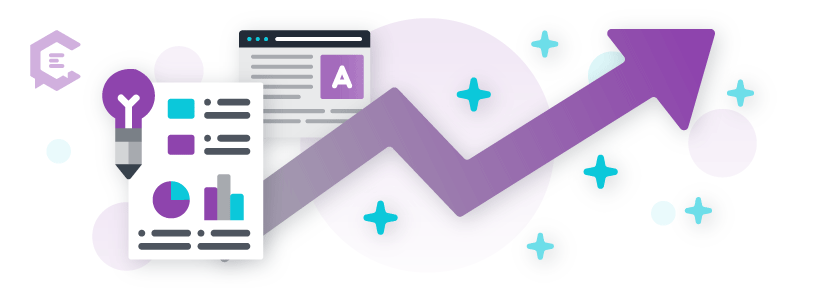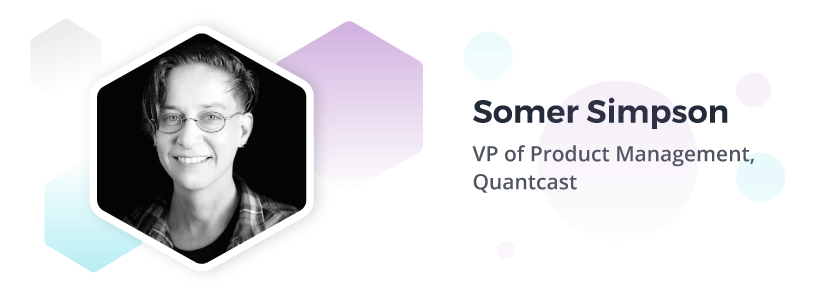It should come as no surprise, but as you read this story, a slew of technology companies know it’s happening. From how you stumbled upon it to how long you stay, there’s a telling data trail being created that feeds into a behavioral marketing narrative that can be formulated, packaged and used by advertisers to better target ads — for you.
This isn’t a terrible thing since tailoring ads to consumers is arguably in your best interests versus the one-size-fits-all approach. I broach this point not to trigger fears of big brother-ness, but simply to address the reality of what digital marketing has become: a roughly $150B industry that influences an entire ecosystem — planners to content creators.
The bigger the ad-tech market has gotten, the higher the stakes have become at delivering quality content that stands out
It’s a reminder that was echoed by Forrester Principal Analyst Jay Pattisall, who in this 2019 Forrester Research study on “The Cost of Losing Creativity,” declared “In our pursuit to be customer-centric marketers — to answer every customer need, want, and desire with digital — we have forgotten an important ingredient: creativity.”
Pattisall’s sentiment comes at a time when impressive new data aggregation tools are being created by a small, select group. The question is no longer if widespread data collection is happening, it’s the depths to which marketers can benefit given what is now possible.
But as Uncle Ben in ‘Spiderman’ once said, “With great power comes great responsibility.”
Not just on an ethical level, but as a way of keeping content quality intact with big ideas born from data.
How the power of data can be used for good is what this piece explores. The wins for marketers — and how knowledge gained about audience behavior can be used to inform better content in the future. These are the million-dollar questions marketers wrestle with daily as they adjust to new workplace realities from GDPR to teamlancing.
To explore such topics, I spoke with Somer Simpson, VP of Product Management at Quantcast, to help navigate some of the latest industry trends as well as what Quantcast is doing to excel on a playing field currently dominated by powerhouses such as Google and Facebook.
Founded in 2006, the San Francisco-based Quantcast specializes in AI-driven real-time advertising, audience insights and audience measurement data that “directly quantifies over 100 million web and mobile destinations” using first-party tags. (In fact, if you want to see how Quantcast measures up to Google Analytics, ClearVoice writer Ben Beck pitted the two powerhouses against each other in a taste test of sorts.)
In my conversation with Simpson, we cover a range of topics including:
- Revelations around how a mother lode of data and insights can be used to create greater content.
- The state of not just where the ad-tech industry is headed, but where it should be headed as well.
- General insights/observations from a thought leader building products for marketers every day.
Here’s what Simpson had to say.
[Quick disclosure: I worked for Simpson at YP just under 10 years ago, back when it was owned by AT&T Interactive.]
An interview with Somer Simpson, VP of Product Management at Quantcast, on how to produce great content
Tell us about your role at Quantcast and the value a product like this can bring to content marketers.
I joined Quantcast three and a half years ago on the publisher team, which was focused on providing insight for publishers. The idea was to help publishers understand the audiences on their site more in-depth. Instead of just knowing how many people are coming and what they’re doing, understanding actually who they are. Now I’ve switched to the marketer side and run the whole product team.
How did you use these insights at the time to influence better content for your customers?
When they’d get RFPs (requests for proposals) from marketers, they would be able to respond with a lot better story. We could take those rich personas and actually find those people on their site and respond to basically win more RFPs.
Can you cite an example of a tool a marketer can use to learn more about their audience — to help them craft a better piece of content?
We’ve got a free-trial program going right now for both marketers or publishers around one of the applications of our product suite called Audience Planner. It’s basically a real-time interactive insights tool. Think Google Trends except you’re talking about behavioral analysis and demographics. Basically the who and what people are interested in of trends.
Can you give a use case for how that has been applied?
We’ve had a number of customers who have really dug into these areas. A frequent use case is that a market will have an assumption about who their customers are. They will come in and say, for example, our audience is: Men 18-35 who are in-market for a new car. They run that report and dig into the demographics, all of our behavioral data built off our data across the open web that we’ve been able to leverage from online behavior of users.
They might learn that this is the audience they thought was their customer, or maybe it isn’t that audience. Maybe they skew older, maybe they skew younger. If they skew heavily with say, millennials, they can learn things about that audience group — like maybe they’re really interested in the environment so they’re looking for more eco-efficient cars. Hybrid or electric cars or whatever that is. They can fine-tune their marketing strategy to focus on that particular audience with creative and product that resonates with that audience. To drive up leads and sales.
What are you able to do now that maybe you couldn’t five years ago?
Everybody has always had data and there was this drive for a long time to basically aggregate and just compile the biggest hoard of data there was. The thing is — it doesn’t matter how much data you have. It’s are you actually able to use it and dig down into it and really understand it? And most people outside of say, Google and or even Facebook, keep that internally and don’t really expose it very much to their customers.
We’ve built our own digital proprietary system that powers the product I’m rolling out and powers Audience Planner. It can basically dig through terabytes of data at a user’s request in under a second and spit out insights. Nothing is sampled; it’s not panel-based data. We’re looking at millions of users across the internet, understanding what sites they visit, how deep they go, what content they’re looking at, the topics of that content and allow people to dig through that in real-time for answers. Nobody else has that.
Given the consolidation in the ad-tech space right now and the shrinking budgets for brands and companies (at the moment due to COVID), what should be the mindset of a marketer who has a limited budget when they’re picking and choosing how to apply the insights and data to create content?
What’s happened in the past 10 years has become more and more complex. Mainly because of the deep competition and issues that pop up around brand safety or fraud. Or attribution. You have this giant Lumascape of companies that are all Band-Aids on a convoluted and broken system.
[Author note: The Lumascape is a reference to the legion of ad-tech companies that exist in the industry today.]
So what we’re trying to do is simplify that because programmatic shouldn’t be hard. You should be able to take real-time data and insights and understand your audience, set up a campaign in five minutes and get that campaign in front of your future customers to be able to drive those conversions. And then be able to get real-time data and insights throughout the course of that campaign to be able to optimize and experiment with your creative to make sure you’re putting stuff in front of people that really resonates and drives conversions.
Ultimately, it will make marketers happy because their budgets are going further and publishers happy because they’re getting more out of that marketer budget for their inventory.
You wrote in your LinkedIn thought-leadership piece that “cracks in the ad-tech ecosystem are becoming increasingly apparent.” I wanted to ask what you think the biggest challenges companies and marketers are facing when it comes to these cracks.
The whole market has changed mainly because of the walled gardens. I don’t have a high opinion of Facebook’s actual performance. As a marketer myself, I’ve run a number of experiments where it just doesn’t produce conversions and they’re grading their own homework, so take it with a grain of salt. That whole process of ‘it’s easier, easier and easier’ and the growth of Google and Facebook, not only within their walled gardens but across the open web, has basically driven down the market. It’s not just that, but also the privacy laws, all the scandals with Cambridge Analytica and that kind of stuff.
All of this has come around to driving a couple of trends:
- Brands asking for media cost transparency that gives them visibility into whether the data of their consumers is protected and is my money being spent in the most effective way possible.
- Needing alternatives to Google and Facebook because it’s best to diversify. The people need something else but it has to be just as easy to use and get them as good, if not better, performance in terms of hitting client outcomes.
That’s the direction things need to go in. As part of doing that, the difficulty is making sure that you maintain brand safety… and that you’re maintaining a level of privacy and transparency for consumers.
Given what you see behind the curtain at Quantcast, where do you see the content-creation process (branded or otherwise) headed over the next five years? Any trends you can point to that you think will really explode?
I think using data for good. If more companies step up and go ‘hey look, we are privacy centric,’ we collect this data and it’s anonymous, and we don’t put quizzes in front of consumers and collect their data and then sell it to other people. If you have more companies that step up and do that and then make those insights readily available to people, I think that’s going to change this game in terms of the quality of content and information that’s put out there… and the ability of people to get that information in front of the people who are most interested in it. And looking for it. It could potentially disrupt Google as the navigation tool for the internet.
It seems that data, metrics and analytics are part of everything content creators do these days. It’s about looking at all the insights to guide creation. I realize there’s a lot of good in having this knowledge readily available, but if the idea and content are king, could this be a problem if it’s leaned upon too heavily?
I think you’re right. This is what happens when people sit operating in their own bubbles. Creating more and more content for those bubbles, for people to discover within their bubbles on social is a problem. Where we need people to pay more attention is how we use the same information and same data to disrupt those bubbles.
I don’t really see that happening a whole lot right now. Google’s search algorithm is part of it as well. They look at your search history and understand things you’ve viewed and they bubble up within the algorithm the search results that are not only going to be relevant for what you searched for, but what also matched your likes and your behavior — especially the ads.
Would you like to see more of a metric assigned to truth?
Anything’s possible, but whose truth? I would rather see something that is a measure of the full spectrum. Using something that says, here’s something about this subject from this particular source from this place on the spectrum — and at the same time, here’s an article on the same topic from a different source that is on the opposite side of the spectrum and about the same space. Something that allows people to consume all the different views that are out there, to hopefully kind of get to their own truth. Because there is no such thing as a single truth.
That’s true. If you could give one final piece of advice to content marketers about the single most important thing they should consider when crafting their next content campaign, what would that be?
That’s a tough one. There are a thousand things. I guess just diversify your sources of data and dig deeper. Don’t just write about what everybody else is writing about. Look for an alternative perspective and let the data guide you in that.







